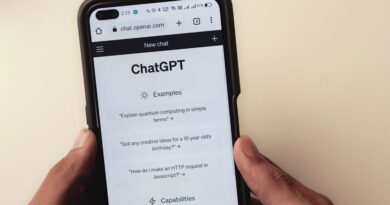Boost Your Website’s Reach with Accessibility
Did you know that over a billion people worldwide live with some form of disability? This number is growing. By improving your websites accessibility, you not only support this community but also widen your audience. An accessible site can boost your visibility, user engagement, and ultimately your success.
In this article, well explore why accessibility matters for your website and how to enhance it. Youll learn simple ways to make your site more inclusive. Lets dive in!
What is Website Accessibility?

Website accessibility means designing your site so everyone can use it, regardless of their abilities or disabilities. This includes people with visual, auditory, motor, or cognitive impairments. Imagine trying to read a website but it’s hard to see or navigate. Frustrating, right?
Accessibility isn’t just a nice-to-have; it’s a must-have. According to the World Health Organization, 15% of the worlds population experiences some form of disability. If your website is not accessible, you’re missing out on a significant audience.
Why Should You Care About Accessibility?

Beyond being the right thing to do, making your site accessible can lead to tangible benefits. Here are a few reasons:
- Wider Audience: More users can access your content.
- Better SEO: Search engines favor accessible sites.
- Improved User Experience: Everyone finds it easier to navigate.
- Legal Protection: Avoid lawsuits related to accessibility compliance.
Ultimately, when everyone can access your site, your reach grows. And that’s good for business!
How Can You Improve Accessibility?

Now that we understand the importance of accessibility, lets look at how to make your website more inclusive. Here are some simple steps to get started:
1. Use Clear and Simple Language
Complicated words and jargon can alienate users. Use plain language. Write as you speak. For example:
- Instead of utilize, say use.
- Instead of comprehend, say understand.
Clear language helps all users, especially those with cognitive disabilities.
2. Provide Text Alternatives for Images
Images can be a barrier for visually impaired users. Always include alt textshort descriptions of images. This helps screen readers convey the image content to users.
For instance, instead of labeling an image as “image1.jpg,” use “A golden retriever playing in the park.” This gives context to the users who can’t see the image.
3. Ensure Your Site is Keyboard-Navigable
Many users cannot use a mouse. They rely on keyboards for navigation. Make sure every part of your website can be accessed using keyboard shortcuts. Test your site by trying to navigate without a mouse.
4. Use Color Carefully
Color is crucial for design, but it can also be a barrier. Use high contrast colors for text and backgrounds. This ensures readability for those with visual impairments.
Additionally, don’t rely on color alone to convey information. For example, use symbols or patterns along with colors in charts and infographics.
5. Include Captions and Transcripts
If your site has videos or audio, provide captions and transcripts. This helps those who are deaf or hard of hearing. It also benefits users who prefer reading to listening.
For example, a video on your site might be great, but without captions, it excludes a portion of your audience.
What Tools Can Help You?

There are many tools available to help you test and improve your website’s accessibility. Here are a few popular ones:
- WAVE: A web accessibility evaluation tool.
- AXE: A browser extension for accessibility testing.
- Screen Readers: Tools like JAWS or NVDA help you experience your site as visually impaired users would.
Using these tools can provide you with insights on where your site fails accessibility standards and how to fix it.
Are There Legal Requirements for Accessibility?
Yes, there are legal standards regarding website accessibility. The Americans with Disabilities Act (ADA) requires businesses to make their services accessible to all. Many courts have ruled that this includes websites.
If your site does not meet accessibility standards, you could face legal challenges. it’s best to be proactive and make your site accessible from the start.
Common Misconceptions About Accessibility
Is Accessibility Just About Disabilities?
Not at all! While accessibility helps those with disabilities, it benefits everyone. For example, parents holding a baby may need to use one hand to browse. Older adults may struggle with small text. Accessibility improves the experience for all users.
Is Accessibility Expensive to Implement?
Many accessibility features are simple and cost-effective. A few adjustments in your design can go a long way. By adopting accessible practices from the beginning, you save on potential redesign costs later.
Conclusion: Take Action Now!
Improving your website’s accessibility isn’t just about complianceit’s about reaching more people and creating a better experience for everyone. Start small. Make one or two changes today, then keep building on those improvements.
Remember, accessible websites can thrive. They attract a wider audience, enhance user satisfaction, and protect against legal issues.
Ready to make your website more accessible? Start by evaluating your site today.
For more insights on improving website performance, check out our post on improving website speed.
Take the first step towards accessibility and watch your audience grow!



